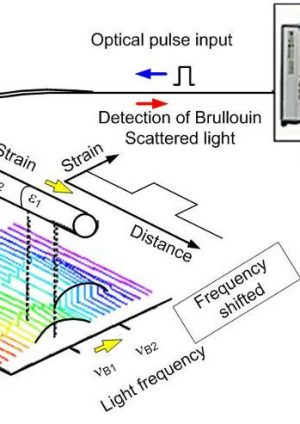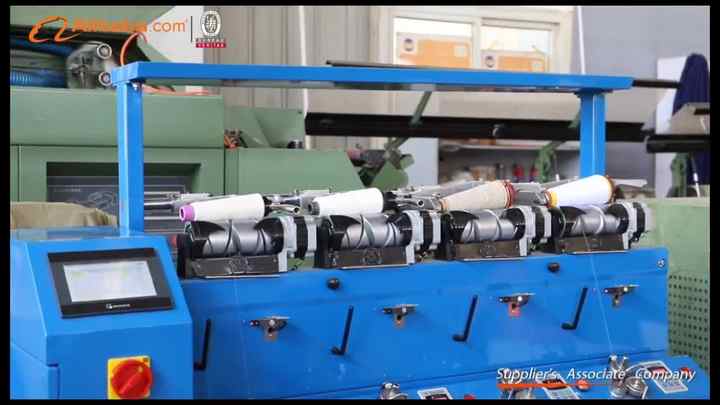Optimize Your Fiber Optic Performance: Comprehending Optical Fiber Diameter Analyser Modern Technology
The performance of fiber optic systems is seriously influenced by the accuracy of their size, a factor frequently ignored in the search of optimum signal honesty. Comprehending the modern technology behind optical fiber size analysers discloses the detailed equilibrium in between dimension precision and manufacturing quality. These devices not just improve compliance with market requirements however also supply real-time understandings that can preemptively attend to prospective problems. Nevertheless, the ramifications of their usage prolong beyond simple measurement; they can fundamentally alter the landscape of fibre optic effectiveness. What aspects should one think about to harness their full potential?
Significance of Optical Fibre Size
The diameter of optical fiber plays a vital function in figuring out the performance and efficiency of communication systems. Alternatively, smaller sized sizes often tend to support less modes, which can boost signal quality and reduce crosstalk.

In addition, comprehending the size's effects can lead to cost financial savings by minimizing the demand for signal boosting and repeaters in substantial networks (optical fibre diameter analyser). Finally, the significance of optical fibre diameter can not be overemphasized, as it straight affects the overall performance and reliability of modern-day communication systems

Just How Diameter Affects Signal Quality
Signal quality in optical fibre systems pivots significantly on the diameter of the fibre. The size influences numerous key parameters, including attenuation, bandwidth, and modal dispersion. A smaller sized size can cause greater depletion rates, leading to signal loss as light journeys with the fibre. This attenuation can jeopardize the honesty of the transmitted data, leading to a decrease in signal top quality, particularly over fars away.
On the other hand, bigger diameters generally allow for enhanced light capture and decreased modal diffusion, enhancing signal clearness. In multimode fibres, a bigger core diameter can support several light modes, but it might also introduce intermodal dispersion, which can deteriorate signal quality. For that reason, selecting the optimum fiber diameter is essential for achieving the desired performance in details applications.
Additionally, the interaction between the fibre diameter and the wavelength of the light used plays a vital duty in identifying the effective transmission distance and total signal stability. Thus, comprehending exactly how fibre size impacts signal high quality is crucial for network developers and designers striving to maximize optical fiber systems for reputable, high-speed information transmission.
Overview of Diameter Analyser Technology
In many optical fiber production processes, exact dimension of fiber diameter is essential for ensuring constant efficiency and quality (optical fibre diameter analyser). Size analysers are advanced tools created to evaluate the physical dimensions of optical fibres with high accuracy. They use sophisticated optical and laser modern technologies to determine the size, ovality, and concentricity of the fibre, therefore offering essential information for quality assurance
These analysers can operate in-line during the manufacturing procedure or as part of off-line testing procedures. In-line systems make it possible for real-time monitoring, allowing suppliers to readjust criteria immediately, therefore keeping optimum manufacturing click over here now problems. Off-line analysers, on the other hand, supply extensive assessments of batches, guaranteeing that any deviations from defined tolerances are identified and dealt with.
Size analysers dramatically add to the decrease of problems in optical fibers, enhancing general product integrity. By regularly determining key parameters, these technologies promote conformity with sector requirements and specifications. As the demand for high-performance optical fibres remains to increase, the function of size analysers becomes significantly important in attaining the preferred high quality and efficiency requirements in fibre optic systems.
Trick Features of Fibre Size Analysers
Although numerous versions of fiber size analysers exist, they generally share a number of crucial features that boost their capability and integrity. Among the most substantial attributes is high-resolution measurement capabilities, which guarantee accurate diameter readings, critical for keeping quality control in fibre manufacturing. In addition, numerous analysers include innovative optical sensors created to discover minute variants in fiber diameter, therefore providing vital information for procedure optimization.
One more essential attribute is real-time surveillance, permitting drivers to get prompt feedback on fiber diameter throughout the production process (optical fibre diameter analyser). This ability facilitates rapid modifications and decreases the probability of problems. Several analysers additionally come geared up with easy to use user interfaces, enabling drivers to easily navigate through settings and information outputs
Moreover, robust information storage and evaluation performances are vital for tracking historical efficiency fads and ensuring compliance with industry requirements. These attributes collectively add to the effectiveness of fiber size analysers in maximizing fibre optic performance.
Finest Practices for Fibre Optimization

First, regular calibration of optical fiber diameter analysers is necessary. This guarantees precise dimensions and reduces potential disparities that could influence efficiency. Next, maintaining a clean working setting is important; dirt and impurities can lead to indicate destruction.
Furthermore, it is very important to pick fibers that meet details application requirements. This involves examining elements such as depletion, bandwidth, and environmental conditions. Appropriate installation techniques need to additionally be adhered to, consisting of preventing sharp bends and too much stress, which can jeopardize fibre integrity.
In addition, employing advanced monitoring systems can promote real-time performance assessments, allowing timely recognition of problems. Regular screening and upkeep need to be conducted to ensure that fibres continue to be within optimal functional parameters.
Last but not least, training personnel on the most up to date fiber optimization innovations and techniques will certainly improve their capacity to carry out reliable strategies. By following these ideal methods, companies can significantly boost the performance and life expectancy of their optical fiber systems, guaranteeing efficient interaction and information transfer.
Final Thought
In final thought, the combination of optical fiber size analyser technology is crucial for making the most of fibre optic efficiency. By ensuring precise dimensions of fiber measurements, these analysers substantially improve signal quality and minimize losses during information transmission.
Signal top quality in optical fibre systems hinges significantly on the size of the fibre.In lots of optical fiber production processes, accurate measurement of fibre size is necessary for ensuring consistent performance and top quality. As the need for high-performance optical fibres proceeds to rise, the duty of size analysers becomes significantly important in attaining the wanted top quality and performance standards in fibre optic systems.
These features collectively look here contribute to the effectiveness of fibre size analysers in optimizing fibre optic performance.
In conclusion, the combination of optical fiber diameter analyser innovation is important for maximizing fibre optic efficiency.
 Ralph Macchio Then & Now!
Ralph Macchio Then & Now! Loni Anderson Then & Now!
Loni Anderson Then & Now! Raquel Welch Then & Now!
Raquel Welch Then & Now! Richard Dean Anderson Then & Now!
Richard Dean Anderson Then & Now! Rossy de Palma Then & Now!
Rossy de Palma Then & Now!